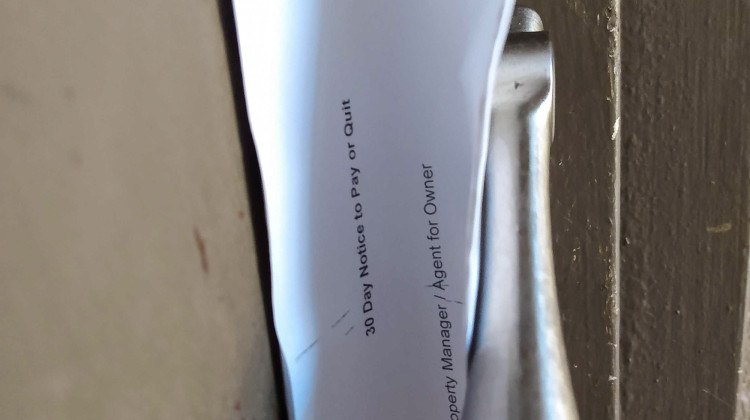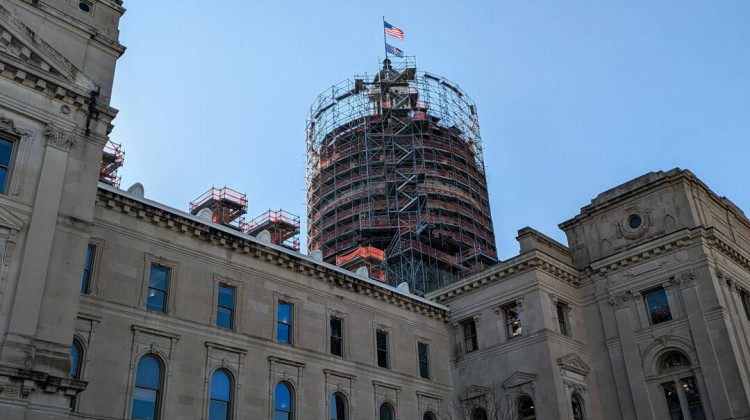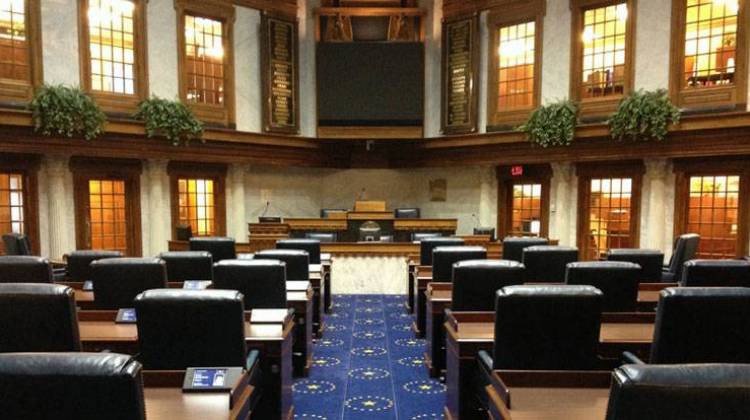
The Indiana Eviction Justice Network began as a group of teams based in religious congregations in central Indiana that sent people to eviction courts to monitor what happened there.
Lauren Chapman / IPB NewsThe Indiana Eviction Justice Network has launched a website that it hopes will help its court watching program spread to more communities across the state.
The network began as a group of teams based in religious congregations in central Indiana that sent people to eviction courts to monitor what happened there.
Rabbi Aaron Spiegel said those court monitors help increase transparency and have impacted the process.
“My favorite example is one of the judges who regularly would give people 72 hours to vacate their homes is now giving five days,” Spiegel said.
The network’s new website helps people learn about the court watching program and connects them with training and resources.
“The tool that we created now gives the court watchers questions per case that they … check boxes and then they’re going back after they court watch and entering the data into the site,” Spiegel said.
READ MORE: What should I know before signing a housing lease in Indiana?
Join the conversation and sign up for the Indiana Two-Way. Text "Indiana" to 765-275-1120. Your comments and questions in response to our weekly text help us find the answers you need on housing and other statewide issues.
Questions include whether children were present, whether the tenant was represented by a lawyer, and whether tenants were allowed to speak in court.
Spiegel said the Indiana court system gathers high-level, aggregate information about evictions, but does not have data about what actually goes in the courtroom.
He said the data gathered by court watchers backs up what anecdotal evidence was telling them.
“Tenants rarely, if ever, have any legal representation,” Spiegel said. “It’s far and away overrepresented by women of color.”
Spiegel said there are currently about 50 court watchers. And he said the biggest problem is burnout.
“It’s really hard to do this work,” Spiegel said. “It’s hard to sit in a courtroom for two or three hours and watch people be abused.”
Spiegel said the existing congregation-based teams have support systems in place, including group meetings. He said the network is exploring support for new court watchers brought on board through the website, who likely won’t work in teams.
Brandon is our Statehouse bureau chief. Contact him at bsmith@ipbs.org or follow him on Twitter at @brandonjsmith5.
 DONATE
DONATE






 Support WFYI. We can't do it without you.
Support WFYI. We can't do it without you.